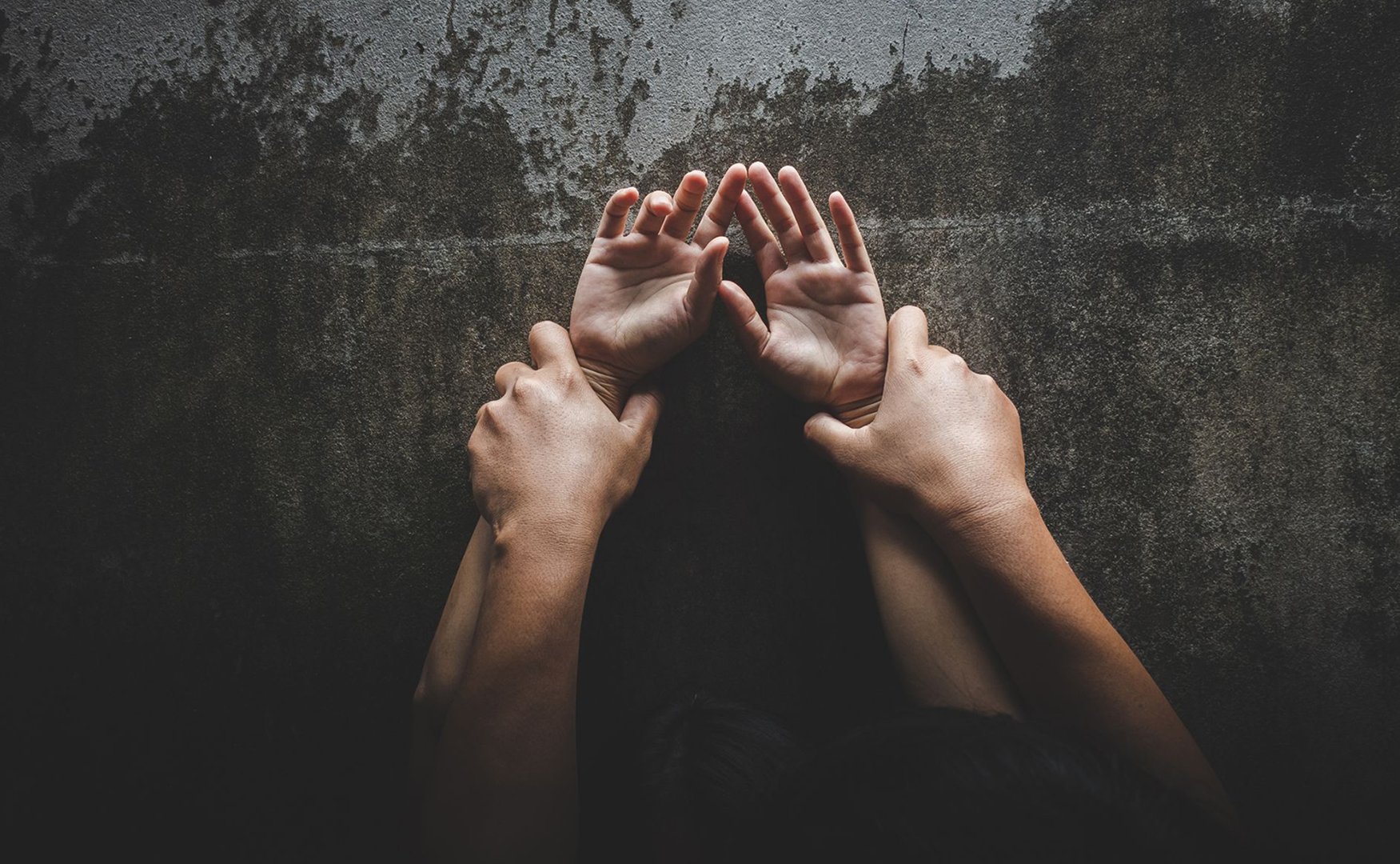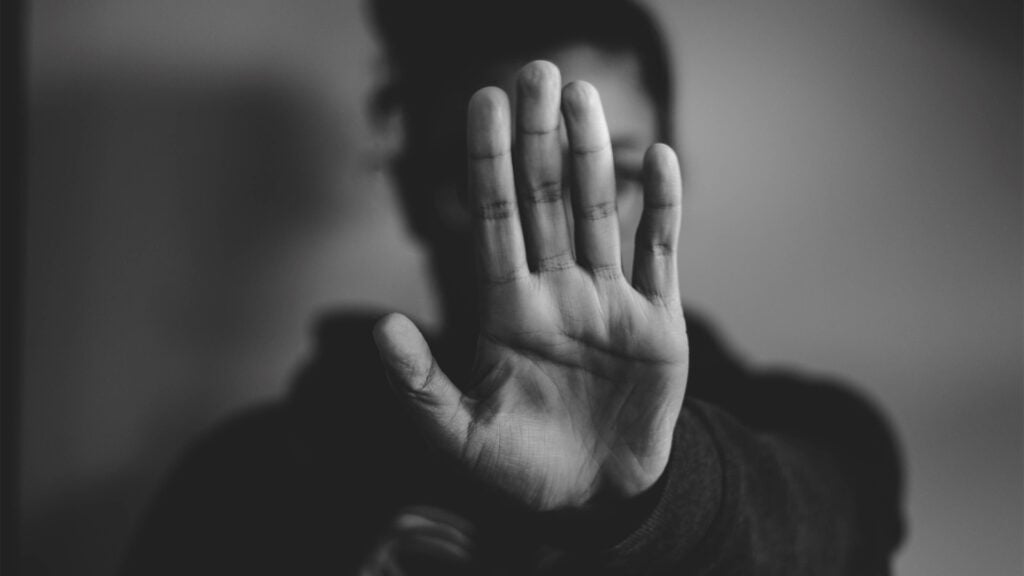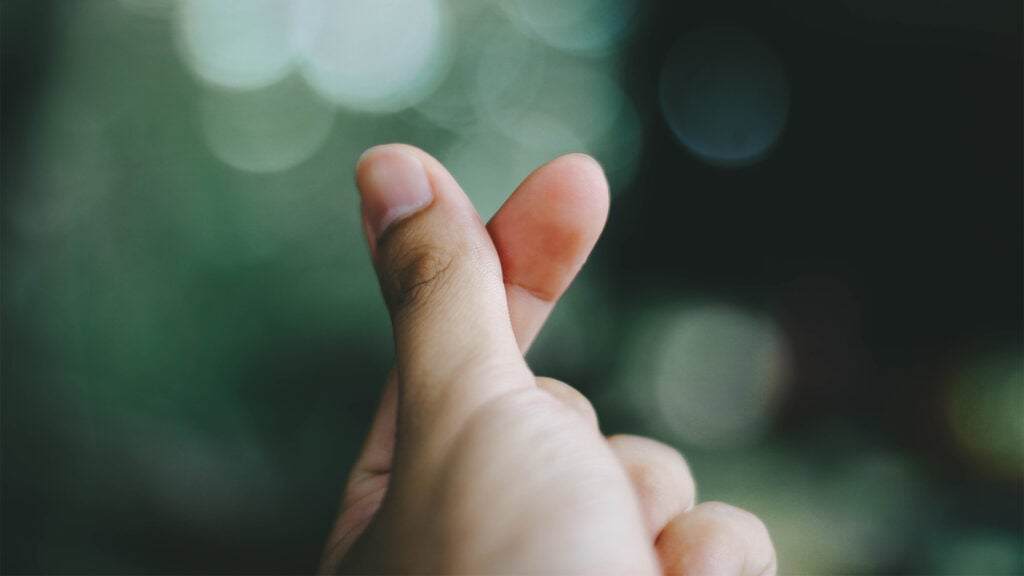
It doesn’t matter if you’re sleeping with someone for the first time or the 500th time, it’s always essential to know that you can back out of things (or just slow things down) anytime you feel you need to.
Consent isn’t a fixed point in time, it’s more fluid than that - it’s an ongoing conversation that never really ends - and to maintain consent, comfort, and pleasure throughout your entire sexual activity with someone, it’s always good to set up a safe word beforehand.
Safewords have commonly been thought to be strictly a BDSM essential, but really, no matter what kind of sex you’re having and with who, safewords are a great idea.
A safeword is one single word selected by you and your partner that, when used, indicates all sexual activity should be paused. This can be for any reason...maybe the sex is too intense or roleplaying has crossed a line or maybe you just need to stop altogether - whatever the reason, a safeword is a cause for pause.
Having a safeword is great, but you should by no means count on this safeword to be the only boundary you have. Talking about and setting healthy boundaries agreed on by all parties involved before getting down and dirty is still a definite must.
To be frank: sometimes your mouth is busy - so you need another way to let your partner(s) know you need to push pause.
Enter safe signals.
These are essentially gestures (usually done with your hands) that can act as a safe word when you’re unable to speak. Typically people have both a safe word and a safe gesture and use one when they aren’t able to use the other.
You might be asking yourself why you need a safeword...after all, can’t you just tell them to stop or say no? Well, during sex, saying “no” could be part of the game (for example, during consensual non-consent scenes).

Saying “stop” on the other hand could also be part of “don’t stop”...of course, you could say “keep going” instead, but the point here is that words like “no” and “stop” can be confusing, especially in the heat of a BDSM scene.
Many people assume choosing a safe word is easy - you just pick a word and assign a meaning to it and voila - you have a safe-word.
However, it’s really not that simple and sometimes takes a bit of brainpower to come up with a word you and your partner(s) can agree on.
While you don’t both have to have the same word (they could say one thing and you could say another), it does have to be a word that everyone involved can immediately recognize and understand in the heat of the moment.
Creating safe words can take a bit of time and a few tries to get it right, but here are some things to keep in mind when you’re on the hunt for the perfect word(s).
Choosing a safe word can feel really fun - you start to think of all these different unique words that you could use. And while screaming “pomegranate” during sex to let your partner know you need a break seems really fun and is definitely a word I would remember assigning meaning to, it also a word that your partner may forget in the heat of the moment.
Not all safe words were created equal. If you’re interested in using something like the “traffic light system”, you could assign a meaning to each color. Red means hard stop, yellow means slow down/not so hard, and green is good to go.

This idea can translate outside of the stoplight system, you can have different words mean different things.
For example, say “bananas” is your hard-limit safeword, this will mean completely stopping what you’re doing. “Apples”, on the other hand, could be assigned to the meaning of simply slowing down so you can enjoy yourself more.
Along the same lines as using traffic light signals, be sure to keep in mind you are both different people with unique experiences and some words may hold different meanings to each of you. This is why it’s important to have the safe word talk - what words are we using to communicate during sex and what specifically do these words mean to you.
Steer clear of things you could potentially say during sex or things that sound sexual. In fact, the safest bet is to go with things that are not at all sexual in any context, ever.
Think of maybe the least sexy fruit, vegetable, or celebrity you can think of (there are some funny options later in this article) - and go with that! I know I wouldn’t be able to keep going immediately after someone screamed out “Justin Bieber” or “Cookie Monster.”
An important thing to remember: when it comes to safe words, YOU get to choose how (and when) it’s used and what exactly it means when you use it. Maybe you want your safe word to just mean “check in with me” or maybe you want it to mean everything has to stop immediately.
Communicating your safe words and their meanings to your partner(s) is essential in maintaining a comfortable and safe environment.
The Traffic Light System is maybe one of the most common multi-word combinations.

“Red” means stop and is also one of the most commonly used safewords out there.
“Yellow” means slow down and “green” means all-clear. This one is pretty straightforward and super easy-to-use.
Foods are also very common safe words to use - “pineapple” is on top of the “food-related” safeword list and is actually the number two most commonly used safeword (behind RED).
“Banana” comes in as a close second for food-related words, with “orange” and “peach” being used as alternatives.
Other food-related safewords that are commonly used are “avocado”, “spaghetti”, and “cinnamon”. Other colors were also pretty popular, such as “blue”, “purple”, “black”, and “violet”.
Using mystical safewords can add a bit of fun with options like “unicorn”, “sparkles”, “magic” or even “top hat.” Adding in some Harry Potter words (for my fellow Potterheads), I was pleasantly surprised to see “Hufflepuff”, “Dobby”, “Hippogriff” and “Hogwarts” on this top 50 list.
Going further into the TV and movies route, another one I like is “Kelly Clarkson”, which was the safeword used in the movie 40-Year-Old Virgin, along with “foliage”, which was a safeword used by The Office’s Michael and Jan (although she usually pretended she didn’t hear him, which is a huge safeword no-no.)
Current events safewords are all the rage because there is nothing that is as unsexy as “Donald Trump” being yelled during sex. Other current events words on the list include “fake news” and “Mike Pence.” I’m not sure how to feel about all that...so let’s just move on.
Nostalgic safewords are fun - these can be words that make you think of a special time, like “Nickelback”, “PlayStation” or “cassette tape.” Or you could slip into some old-school cartoons and go the route of “Elmo”, “Tinkerbell” or “Scooby-Doo!”
Oldies but goodies that never go out of style are “uncle”, “safeword” (which, may I say, is genius), and “pause.” There is even one on this list that is simply “stop the sex!!”, which I must say is clear, direct and for some reason very funny.
People, places, and things can also be used. Have some fun with it!
“Oklahoma” and “Ohio” are commonly used places in America. “Timbuktu” is a good one, simply because it’s a funny word. I also feel as though “Switzerland” deserves a place in here because, you know, they are neutral.
Whimsical words such as “spatula” and “rubber duck” have also been used, along with a few others that I just couldn’t leave out, such as “Tamagotchi”, “Pikachu” and “Sassafras” from this list because I love those choices.
If none of those more commonly used words suit your needs, you can always come up with safe words that are unique to you as a couple. Some ideas are places you have lived together, where you met, where you had your first date or where you went on your honeymoon.
As I said before, sometimes your mouth is...busy.
Coming up with physical gestures for back-ups just in case you’re engaged in facefucking or wearing a gag is just as important as coming up with safe words.

Pinching your partner to let them know you need to stop is a great way to use safe signals in replacement of words when your mouth is, well, otherwise occupied.
Not only is this a gesture that is relatively easy to do (as your hands are likely on or close to them anyway), but it also will immediately give them pause as pinches tend to be extremely noticeable when they happen unexpectedly.
Putting a bell, squeaky toy, or another loud object within reach can be a great way to end the play when it gets too much. This is actually one of the best options, as sometimes physical cues without auditory alerts can go unnoticed.
Snapping your fingers is another visual clue that has a bit of an audio sound to it which can be helpful if your partner isn’t facing you or is otherwise a bit distracted.
You can choose to snap your fingers multiple times or use a combination of snaps and taps (on them or the bed) to get them to stop what they are doing.
Another good safe signal would be tapping the bed (your headboard or a part of the bed you know will make some noise) or your partner. These taps should be definitive and hard so your partner can notice them.
If you’re familiar with BDSM or kink scenes, you may already know that discussions need to be ongoing. Just because you hooked up last night doesn’t mean you can just gloss over the talk.
Of course, if your partner already knows your safeword(s), the talk will be relatively short and simple, but there’s no harm (and all the reasons) to remind them of your boundaries and limits, including which safewords you might use and when.
When you’re having sex with someone you don’t know or don’t know very well, the talk is all the more important, especially if you’re going to be involved in something that could be potentially dangerous (such as breath play, for example).
Set your limits, establish a safe word, and read the room: can you trust your partner to respect your safeword and boundaries?
Even when you’re in a long-term relationship or having consistent sex with the same person or people, it’s never a bad thing to reiterate your safe word and limits before getting started.
While the safeword may be drilled into your head, you have no idea if they remember or not - so take a pause before you get started to refresh them.
Safewords aren’t just for submissives, either. Dominants can have and use safewords or signals as well. Respect, consideration, and safety should go all ways.
You can either agree on the same word or you can both have different words - whatever you choose, be attentive to what your partner is saying, even if they are the dominant one in the scene.
Unlike some other “sex talks” you have with your partner (the ‘what’s your number?”’ talk and the ‘are you STI free?’ talk can be particularly daunting even though they are essential) - this is one talk that you can have some fun with!
Creating a funky safe word and talking about limits to turn into a trust exercise and foreplay all in one. Describing what you would do to each other and explaining when you’d need to use the safeword really sounds a lot like dirty talk already.
The only way to experiment with and ultimately be fulfilled by sexual fantasies is by achieving them with a person who you feel totally comfortable and safe with.

Rough sex or BDSM play isn’t just about the physical feelings, much of the time it’s about the emotional state of two people who have a unique bond and trust in each other to allow themselves to be vulnerable enough to share their deepest desires.
Sharing your safewords with a partner and feeling confident that they will not only respect your use of them but also understand why you need that security measure put into place is how you know you’ve found a partner that will allow you to experience better, more passionate, more satisfying sex.